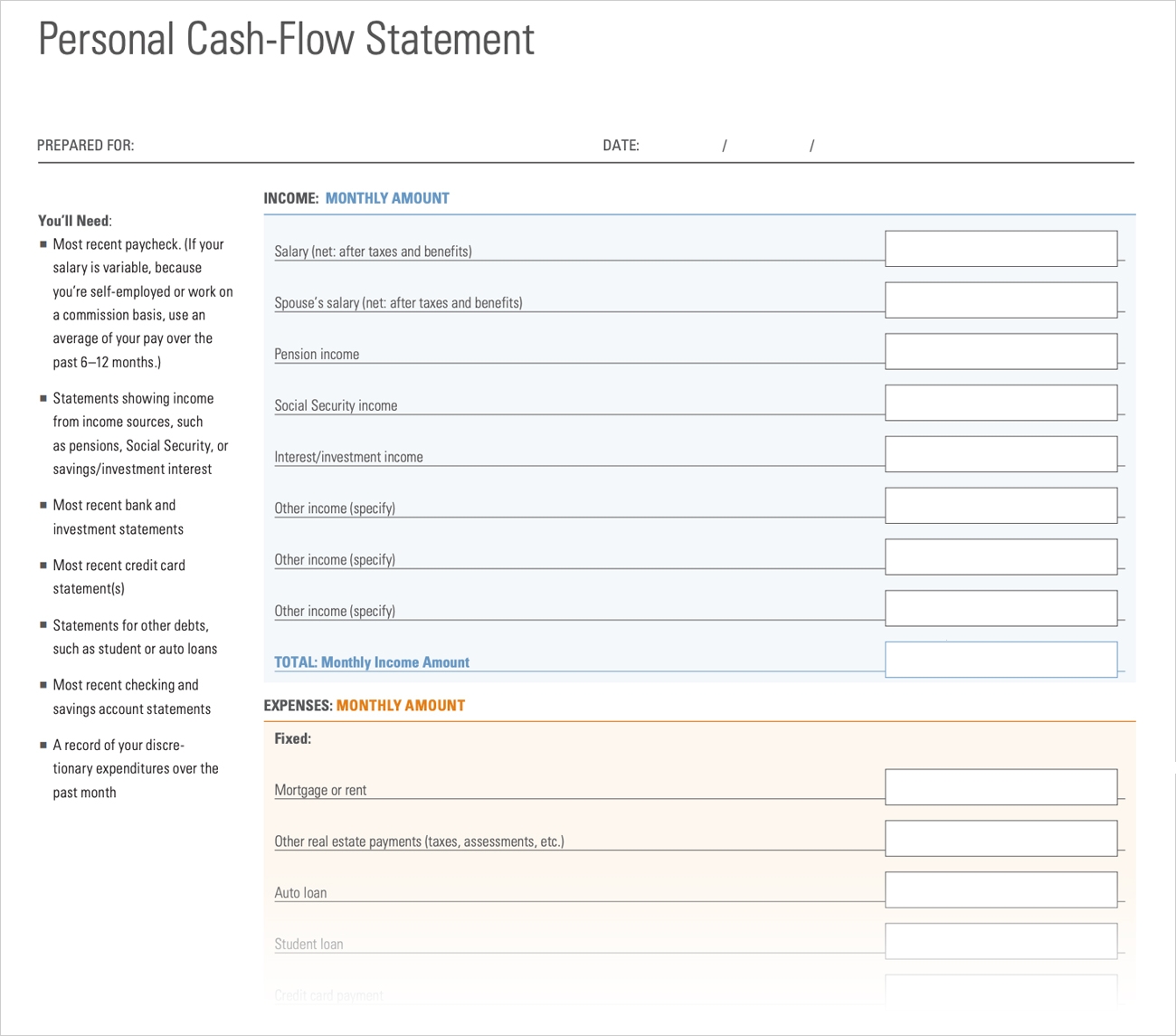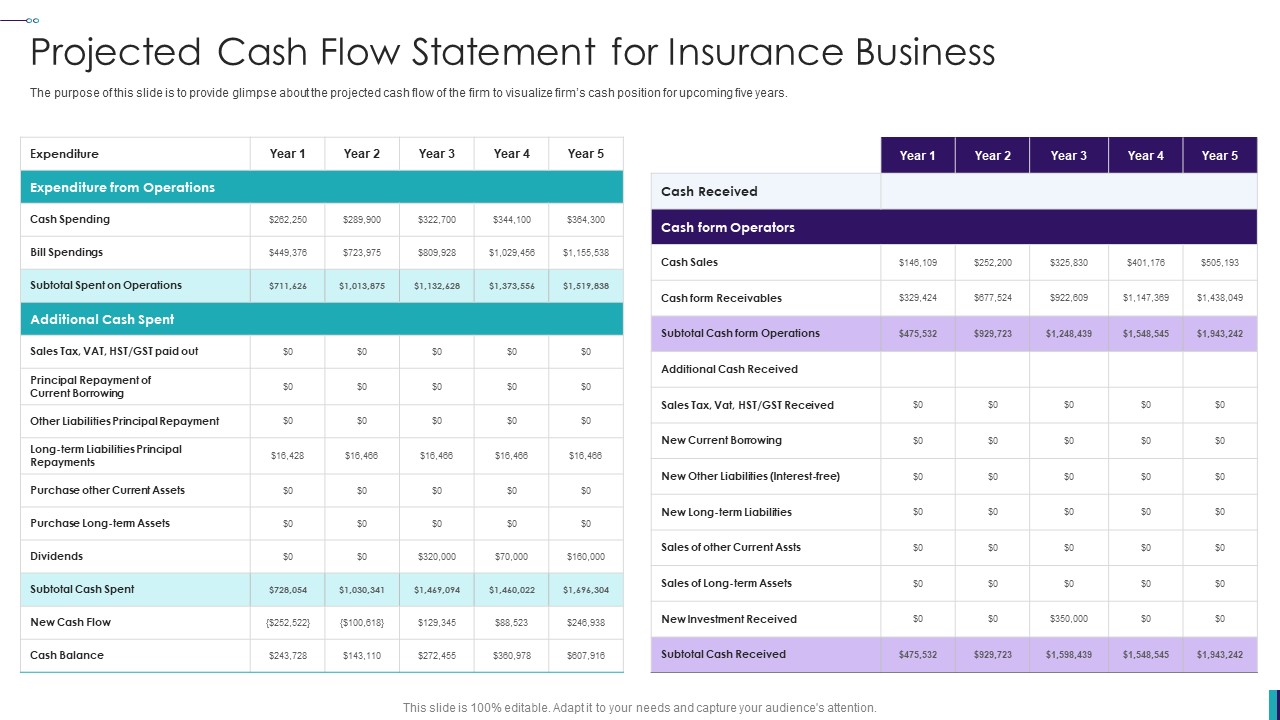

Finance
What Is An Incremental Cash Flow
Published: December 21, 2023
Learn about finance and understand the concept of incremental cash flow, its importance in financial decision making, and how it impacts business profitability.
(Many of the links in this article redirect to a specific reviewed product. Your purchase of these products through affiliate links helps to generate commission for LiveWell, at no extra cost. Learn more)
Table of Contents
- Introduction
- Definition of Incremental Cash Flow
- Importance of Incremental Cash Flow Analysis
- Components of Incremental Cash Flow
- Calculation of Incremental Cash Flow
- Examples of Incremental Cash Flow Analysis
- Limitations of Incremental Cash Flow Analysis
- Comparison of Incremental Cash Flow Analysis with Other Financial Metrics
- Conclusion
Introduction
Welcome to the world of finance, where terms like cash flow and analysis often come up in discussions. In particular, one very important concept in finance is incremental cash flow. Whether you are a business owner, an investor, or just someone curious about finance, understanding incremental cash flow is crucial for making informed decisions.
When it comes to financial analysis, businesses and individuals need to carefully evaluate the impact of their decisions on cash flows. But what exactly is incremental cash flow? In simple terms, it refers to the net change in a company’s or an individual’s cash flow that occurs as a result of a particular decision or action. It provides a clear picture of how a decision affects cash flows and helps in evaluating the profitability of an investment or project.
Incremental cash flow analysis is widely used across various industries and scenarios. Whether it’s deciding whether to launch a new product, expand a business operation, or make an investment, understanding the incremental cash flows associated with each decision is crucial.
By evaluating incremental cash flows, businesses can make more informed decisions about allocating resources, managing risks, and maximizing profitability. Similarly, investors can assess the potential returns and risks of an investment by analyzing the incremental cash flows it generates.
In this article, we will delve into the importance of incremental cash flow analysis, its components, calculation methods, and examples to help you understand how it can be applied in practical situations. We will also discuss the limitations of incremental cash flow analysis and compare it with other financial metrics. So, let’s dive into the world of incremental cash flow and explore how it can shape financial decision-making.
Definition of Incremental Cash Flow
Incremental cash flow refers to the net change in cash flow that occurs as a result of a specific decision or action. It represents the difference between the cash flow that would occur if the decision were implemented and the cash flow that would occur if the decision were not implemented.
In other words, incremental cash flow looks at the additional cash flow generated or lost as a direct result of a particular decision or investment. It helps to isolate the specific impact of the decision on cash flows, allowing businesses and individuals to analyze the financial implications and make informed decisions.
It is important to note that incremental cash flow only considers the changes in cash flows that are directly attributable to the decision being evaluated. It does not take into account any sunk costs or cash flows that would have occurred regardless of the decision. By focusing only on the incremental changes, businesses can make more accurate assessments of the financial impact of their decisions.
Incremental cash flow analysis is commonly used in various financial scenarios, such as evaluating the profitability of new projects, assessing the impact of investment decisions, and measuring the potential returns of business expansions. By understanding the incremental cash flows associated with these decisions, businesses and investors can assess the financial viability and make optimal choices.
Overall, the definition of incremental cash flow revolves around understanding the net change in cash flows resulting from a specific decision. It is a critical concept in financial analysis, allowing businesses and individuals to evaluate the impact of their actions on cash flows and make informed financial decisions.
Importance of Incremental Cash Flow Analysis
Incremental cash flow analysis plays a vital role in financial decision-making for businesses and individuals. It provides valuable insights into the financial implications of specific decisions or investments. Here are some key reasons why incremental cash flow analysis is important:
- Accurate evaluation of financial viability: By considering incremental cash flows, businesses can accurately assess the financial viability of a project or investment. It allows them to determine if the potential cash inflows outweigh the cash outflows and if the investment is worth pursuing.
- Risk assessment: Incremental cash flow analysis helps in evaluating the risks associated with a specific decision. By understanding the changes in cash flows, businesses can identify potential risks and uncertainties, enabling them to make informed decisions and mitigate potential losses.
- Resource allocation: Analyzing incremental cash flows provides businesses with insights into resource allocation. By understanding the financial impact of various options, companies can allocate resources effectively, focusing on investments that generate the highest incremental cash flows and maximize profitability.
- Decision-making: Incremental cash flow analysis aids in making informed financial decisions. Businesses and individuals can compare the incremental cash flows of different options, allowing them to choose the option that provides the highest potential returns or aligns with their financial goals.
- Project evaluation: For businesses considering new projects or ventures, incremental cash flow analysis is essential. It helps in evaluating the financial feasibility of the project, determining the potential profitability, and guiding decision-making regarding project initiation or expansion.
- Investment assessment: Investors rely on incremental cash flow analysis to assess potential investments. By analyzing the incremental cash flows generated by an investment, investors can determine if it aligns with their financial goals and risk tolerance, enabling them to make informed investment decisions.
In summary, incremental cash flow analysis is crucial because it provides a comprehensive understanding of the financial impact of specific decisions or investments. It assists businesses with accurate evaluation, risk assessment, resource allocation, informed decision-making, project evaluation, and investment assessment. By considering incremental cash flows, businesses and individuals can make more informed and financially sound choices that align with their goals and maximize profitability.
Components of Incremental Cash Flow
When conducting incremental cash flow analysis, it is important to consider the various components that make up the cash flow changes resulting from a decision or investment. Understanding these components allows for a more comprehensive evaluation of the financial impact. Here are the key components of incremental cash flow:
- Initial Investment: The initial investment refers to the upfront cash outflow required to implement the decision or investment. It includes costs such as equipment, machinery, infrastructure, and any other expenses directly associated with the project.
- Operating Cash Flows: Operating cash flows are the ongoing, expected cash inflows and outflows that occur as a result of the decision or investment. It includes revenues generated, expenses incurred, depreciation, and taxes. Estimating the cash flows over the project’s lifespan is crucial to determine the incremental impact on cash flows.
- Tax Implications: Taxes can have a significant impact on cash flows. It is important to consider the tax implications of the decision or investment, including changes in taxable income, tax rates, and any tax benefits or incentives provided by the government.
- Salvage Value: The salvage value is the estimated value of the assets at the end of their useful life. It represents the cash inflow received when disposing of the assets. Including the salvage value in the analysis helps capture the net impact on cash flows at the end of the project.
- Working Capital Changes: Changes in working capital, such as inventory levels, accounts receivable, and accounts payable, can impact cash flows. It is essential to consider any changes in working capital requirements resulting from the decision or investment.
- Opportunity Cost: Opportunity cost refers to the potential benefits or returns forgone by choosing one option over another. It represents the value of the next best alternative that could have been pursued. Evaluating the opportunity cost helps in assessing the incremental cash flow impact of the chosen decision.
By analyzing these components, businesses and individuals can gain a comprehensive understanding of how a decision or investment will impact their cash flow. It allows for a more accurate evaluation of the financial implications, enabling informed decision-making and improved financial planning.
Calculation of Incremental Cash Flow
To calculate the incremental cash flow resulting from a specific decision or investment, various factors and cash flow components need to be considered. Here’s a step-by-step guide on how to calculate incremental cash flow:
- Identify the time horizon: Determine the time period over which the decision or investment is expected to have an impact. This will help in calculating the cash flows over the relevant timeframe.
- Estimate the initial investment: Determine the initial cash outflow required to implement the decision or investment. This includes any upfront costs such as equipment, machinery, infrastructure, and other related expenses.
- Calculate the operating cash flows: Estimate the expected cash inflows and outflows resulting from the decision. Consider revenues, expenses, taxes, depreciation, and any other relevant factors. These cash flows should be estimated for each period within the time horizon.
- Consider working capital changes: Evaluate any changes in working capital requirements as a result of the decision. Account for changes in inventory, accounts receivable, and accounts payable over the relevant time period.
- Account for tax implications: Consider the tax impact of the decision or investment. Calculate the changes in taxable income, tax rates, and any tax benefits or incentives provided by the government.
- Include salvage value: Estimate the value of the assets at the end of their useful life, also known as the salvage value. This represents the cash inflow received when disposing of the assets.
- Evaluate opportunity cost: Assess the opportunity cost of choosing one option over another. Determine the potential benefits or returns forgone by selecting the chosen decision or investment.
- Calculate the net incremental cash flows: Sum up the cash inflows and outflows from the previous steps to calculate the net incremental cash flow for each period within the time horizon.
- Discount the cash flows: To evaluate the present value of the incremental cash flows, apply a discount rate to account for the time value of money. This accounts for the idea that money received in the future is worth less than money received today.
- Analyze the net present value (NPV): Compare the present value of the incremental cash flows with the initial investment. If the NPV is positive, it indicates that the decision or investment is expected to generate positive returns and may be considered viable.
By following these steps and accurately estimating the various cash flow components, businesses and individuals can calculate the incremental cash flow resulting from a decision or investment. This calculation helps in evaluating the financial impact, assessing the feasibility, and making informed decisions about the allocation of resources.
Examples of Incremental Cash Flow Analysis
Understanding how incremental cash flow analysis is applied in practical scenarios can provide clarity on its significance and usefulness. Here are a few examples that illustrate how incremental cash flow analysis is used:
- New Product Launch: A company is considering launching a new product line. To assess its financial viability, the company would analyze the incremental cash flows of the new product. This includes estimating the additional revenues generated by the product, associated costs (including production, marketing, and distribution), working capital changes, and any tax implications. By evaluating the incremental cash flows, the company can determine if the product launch is expected to be profitable.
- Equipment Replacement: A business is contemplating replacing its old machinery with newer, more efficient equipment. To evaluate the financial impact, the business would calculate the incremental cash flows. This would involve estimating the initial investment required to purchase and install the new equipment, the expected cost savings in terms of reduced maintenance and energy expenses, any changes in working capital, and the salvage value of the old equipment. By analyzing the incremental cash flows, the business can make an informed decision about the equipment replacement.
- Business Expansion: A retail business is considering expanding its operations by opening a new store. Incremental cash flow analysis would be conducted to evaluate the financial feasibility. This would involve estimating the initial investment for constructing the new store, projected revenues, operating expenses, working capital changes, tax implications, and any anticipated increase in customer base. By analyzing the incremental cash flows, the business can assess the potential profitability of the expansion and make an informed decision.
- Investment Decision: An investor is evaluating two investment options: Option A and Option B. Incremental cash flow analysis would be conducted to compare the financial returns of each option. This would involve estimating the cash inflows and outflows for each investment, considering factors such as initial investment, projected revenues, operating expenses, working capital changes, tax implications, and the salvage value. By analyzing the incremental cash flows, the investor can determine which option is expected to provide higher returns.
These examples demonstrate how incremental cash flow analysis is applied in different scenarios, such as new product launches, equipment replacements, business expansions, and investment decisions. By estimating and evaluating the incremental cash flows, businesses and individuals can make informed decisions about resource allocation, risk assessment, and financial viability of various options.
Limitations of Incremental Cash Flow Analysis
While incremental cash flow analysis is a valuable tool for evaluating the financial impact of decisions and investments, it is important to be aware of its limitations. Understanding these limitations can help in making more informed decisions and considering other factors alongside incremental cash flow analysis. Here are some key limitations to keep in mind:
- Difficulty in accurate estimation: Estimating future cash flows involves making assumptions and projections, which can be challenging and subject to error. Inaccurate estimations can lead to incorrect assessments of the financial impact.
- Uncertainty and risk: Incremental cash flow analysis does not fully account for the uncertainties and risks associated with a decision. External factors such as economic conditions, market trends, and competition can significantly impact cash flows.
- Intangible factors: Incremental cash flow analysis focuses primarily on tangible factors like cash inflows and outflows. It may not capture the impact of intangible factors like brand reputation, customer loyalty, or employee morale, which can have indirect effects on cash flows.
- Time value of money: Traditional incremental cash flow analysis does not fully consider the time value of money. Cash flows occurring at different time periods may have varying values, and discounting is often used to account for this. However, discount rates themselves can introduce subjectivity and uncertainty.
- Externalities and broader impacts: Incremental cash flow analysis may not consider externalities or broader impacts on the economy, community, or environment. Some decisions can have long-term consequences that are not fully captured in traditional financial analysis.
- Sunk costs: Incremental cash flow analysis focuses on the future cash flows resulting from a decision. It does not consider the costs that have already been incurred in the past, known as sunk costs. This limitation can skew the analysis by not fully considering past investments.
It is important to consider these limitations and supplement incremental cash flow analysis with other financial metrics, qualitative factors, and risk assessments. Additionally, sensitivity analysis and scenario planning can help account for uncertainties and test the robustness of the financial analysis.
While incremental cash flow analysis is a valuable tool, it is crucial to recognize its limitations and employ a holistic approach to decision-making that considers multiple factors and perspectives.
Comparison of Incremental Cash Flow Analysis with Other Financial Metrics
Incremental cash flow analysis is just one of many financial metrics used in decision-making. While it provides valuable insights into the financial impact of a specific decision, it is important to understand how it compares to other metrics. Here, we will compare incremental cash flow analysis with some other commonly used financial metrics:
- Net Present Value (NPV): NPV calculates the present value of all cash inflows and outflows associated with a project or investment. It considers the time value of money by discounting future cash flows back to their present value. Incremental cash flow analysis is often used in combination with NPV to evaluate the profitability of an investment and determine if it generates positive or negative NPV.
- Internal Rate of Return (IRR): IRR is the discount rate at which the present value of expected cash inflows equals the present value of cash outflows. It represents the rate of return generated by the investment. Incremental cash flow analysis is used to estimate the cash inflows and outflows that determine the IRR.
- Payback Period: The payback period is the length of time required for a project’s cash inflows to recoup the initial investment. Incremental cash flow analysis helps determine the cash inflows and outflows over time, allowing for the calculation of the payback period.
- Return on Investment (ROI): ROI measures the return generated from an investment relative to its cost. It is calculated by dividing the net profit from the investment by the initial investment amount. Incremental cash flow analysis provides the necessary information to calculate the net profit and the initial investment.
- Profitability Index (PI): The profitability index measures the ratio of the present value of cash inflows to the present value of cash outflows. It helps determine the relative profitability of different investment options. Incremental cash flow analysis provides the data needed to calculate the present value of cash inflows and outflows for the profitability index.
While incremental cash flow analysis focuses on the net change in cash flows resulting from a specific decision, these other metrics provide additional perspectives on the financial viability and profitability of an investment. They consider different factors such as the time value of money, overall profitability, and return on investment.
It is important to note that these metrics are not mutually exclusive, and in practice, they are often used in combination. Incremental cash flow analysis provides the foundational data for many of these metrics, allowing decision-makers to evaluate financial feasibility, profitability, and return on investment from various angles.
By considering a combination of these financial metrics alongside incremental cash flow analysis, businesses and individuals can make more robust and well-informed decisions concerning their investments and projects.
Conclusion
Incremental cash flow analysis is a powerful tool in the world of finance that allows businesses and individuals to understand the net change in cash flows resulting from a specific decision or investment. By evaluating the incremental cash flows, financial decision-makers can assess the financial viability, profitability, and risks associated with their choices.
In this article, we explored the definition of incremental cash flow and its importance in financial decision-making. We discussed the components involved in incremental cash flow analysis, including initial investment, operating cash flows, tax implications, working capital changes, salvage value, and opportunity cost.
We also provided insights into the calculation of incremental cash flow, highlighting the steps involved in estimating and analyzing the cash inflows and outflows. Additionally, we examined several examples of how incremental cash flow analysis is applied in practical scenarios, such as new product launches, equipment replacements, business expansions, and investment decisions.
While incremental cash flow analysis is a useful tool, we also discussed its limitations, including the difficulty in accurate estimation, uncertainty and risk factors, the exclusion of intangible factors, and the omission of externalities and broader impacts.
Furthermore, we compared incremental cash flow analysis with other financial metrics such as net present value (NPV), internal rate of return (IRR), payback period, return on investment (ROI), and profitability index (PI). These comparisons highlighted the complementary nature of these metrics and how they provide a more comprehensive financial assessment.
In conclusion, incremental cash flow analysis is a fundamental concept in finance that enables businesses and individuals to make informed decisions about investments, projects, and resource allocation. By considering the net change in cash flows resulting from a decision, businesses can assess the financial impact, profitability, and risks associated with their choices. However, it is crucial to consider other financial metrics and qualitative factors alongside incremental cash flow analysis to ensure a holistic evaluation and informed decision-making process.














